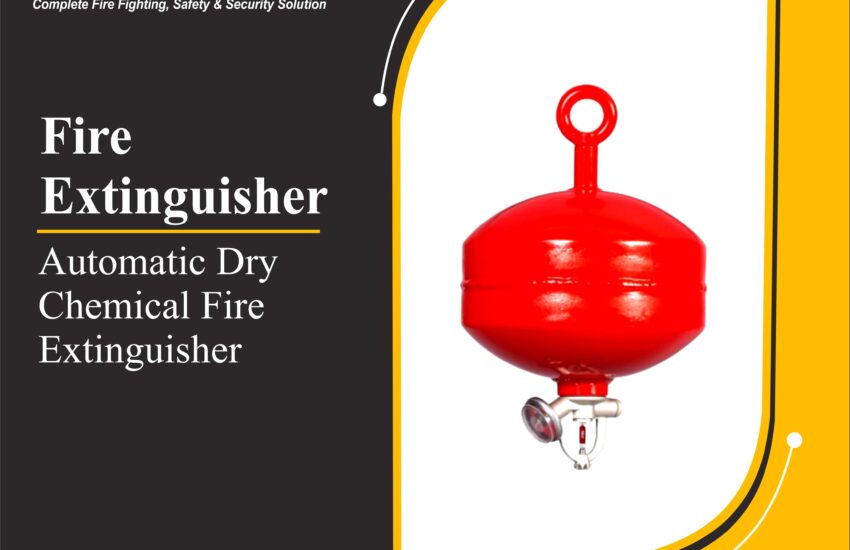Automatic Dry Chemical Fire Extinguisher is a pre-engineered fire suppression system that activates automatically when a fire is detected—without the need for human intervention. Ideal for enclosed or unmanned spaces, this fire extinguisher uses dry chemical powder to quickly suppress Class A, B, and C fires, making it a popular choice in commercial, industrial, and residential settings.
In this guide, we’ll explore what makes automatic dry chemical extinguishers effective, where they’re used, and why they’re a vital part of modern fire protection systems.
What Is an Automatic Dry Chemical Fire Extinguisher?
An automatic dry chemical fire extinguisher is a sealed, pressurized container that releases fire-suppressing powder when a preset temperature is reached (typically via a heat-sensitive bulb or fusible link). This allows for fast fire suppression without the need for manual operation.
Key Features
- Fully automatic operation – No human action required
- Dry chemical agent – Effective on Class A, B, and C fires
- Ceiling-mounted or wall-mounted – Ideal for compact or enclosed spaces
- Pressurized cylinder – Ensures consistent and reliable discharge
- Heat activation – Usually triggered between 57°C to 93°C
Advantages of Automatic Dry Chemical Fire Extinguishers
| Benefit | Description |
|---|---|
| Unmanned Protection | Perfect for areas where people aren’t always present |
| Quick Response Time | Activates immediately when fire is detected |
| Cost-Effective | Minimal installation and maintenance cost compared to suppression systems |
| Low Maintenance | Requires annual checks but minimal upkeep overall |
| Multi-Class Fire Protection | Works on Class A (combustibles), B (flammable liquids), and C (electrical fires) |
Common Applications
Automatic dry chemical fire extinguishers are used in both commercial and residential environments where high fire risk exists but regular human presence doesn’t.
Suitable for:
- Server rooms
- Electrical panels
- Machine rooms
- Generator rooms
- Warehouses
- Transformer cabinets
- Vehicles and heavy machinery
- Kitchen hoods (with proper rating)
How It Works
- Installation: Mounted above or near fire-prone equipment
- Activation: Heat from fire causes the thermal bulb or link to break
- Discharge: The cylinder releases dry chemical powder to suppress fire
- Suppression: The agent disrupts the chemical reaction of the fire, smothering flames
Types of Dry Chemical Powders Used
- Monoammonium Phosphate (ABC Powder) – Versatile for most fire classes
- Sodium Bicarbonate (BC Powder) – Common for flammable liquid and gas fires
- Potassium Bicarbonate (Purple K) – Preferred in industrial or high-risk applications
Installation Guidelines
- Install in ceiling or upper-wall areas directly above fire-risk zones
- Choose activation temperature based on the environment
- Ensure unobstructed area around the extinguisher
- Use correct capacity (1 kg, 5 kg, 10 kg, etc.) based on room size and fire load
Maintenance & Inspection
To remain effective, automatic dry chemical extinguishers require:
- Visual monthly inspections
- Annual professional servicing
- Recharging after discharge
- Hydrostatic testing every 5 years (as per manufacturer and regulatory guidelines)
Compliance & Standards
Most automatic dry chemical extinguishers comply with standards such as:
- NFPA 10
- UL Listed
- ISO and CE certifications
- Local fire authority regulations
Conclusion
An Automatic Dry Chemical Fire Extinguisher is a reliable and efficient fire protection solution, especially in high-risk, low-occupancy zones. Its quick-response system, low maintenance requirements, and cost-effectiveness make it a must-have safety component for industrial, commercial, and residential spaces.


